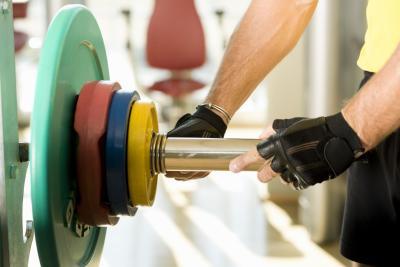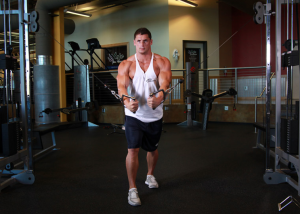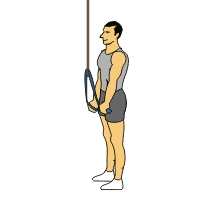 When looking to increase intensity or break through plateaus, dropsets are a great strategy. As I’ve mentioned before, a dropset is as follows:
When looking to increase intensity or break through plateaus, dropsets are a great strategy. As I’ve mentioned before, a dropset is as follows:
A technique wherein, after completing a set of a given exercise until failure, you drop down the weight and immediately continue the exercise with reduced resistance.
Typically, dropsets are best utilized with a workout partner. They can quickly change the weight plates on your barbell. However, if you’re flying solo, you can also use a dropset strategy by “running the rack.”
Here’s how running the rack works.
Approach the rack and select a dumbbell that allows you to complete a normal set of a given exercise. For example, I would use the 55 lb dumbbells to complete 7 bicep curls. Immediately replace the dumbbells with a set that is 5 pounds lighter. Try to complete an additional set. Drop down another 5 pounds and continue on until completing the set is no longer challenging.
It sounds easy. But I promise it’s not. As such, make sure that you don’t compromise your form as the intensity cranks up.
Next time you hit the gym, give it a try.
P.S. If you’re looking to increase muscle size, download “Size Matters: Davey Wavey’s Foolproof Guide to Building Muscle” and get started today!







 If you’ve done any exercise-related research, you’ve probably come across the term superset. A superset is when you perform two exercises back-to-back without stopping.
If you’ve done any exercise-related research, you’ve probably come across the term superset. A superset is when you perform two exercises back-to-back without stopping.





